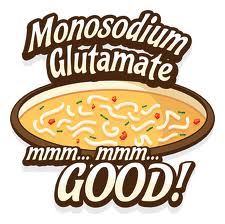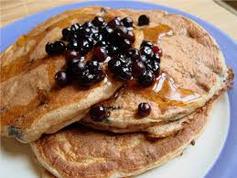
MSG (a slow poison)
The food additive MSG (Mono-Sodium Glutamate) is a slow poison. MSG hides behind 25 or more names, such as “Natural Flavoring.” MSG is even in your favorite coffee from Tim Horton’s and Starbucks coffee shops!
John Erb, a research assistant at the University of Waterloo in Ontario , Canada , and spent years working for the government. He made an amazing discovery while going through scientific journals for a book he was writing called The Slow Poisoning of America.
In hundreds of studies around the world, scientists were creating obese mice and rats to use in diet or diabetes test studies. No strain of rat or mice is naturally obese, so scientists have to create them. They make these creatures morbidly obese by injecting them with MSG when they are first born. The MSG triples the amount of insulin the pancreas creates, causing rats (and perhaps humans) to become obese.
Go into your kitchen and check the cupboards and the refrigerator. MSG is in everything — the Campbell’s soups, the Hostess, Doritos, the Lays flavored potato chips, Betty Crocker Hamburger Helper, Heinz canned gravy, Swanson frozen prepared meals, and Kraft salad dressings, especially the “healthy low-fat”ones…
The items that didn’t have MSG marked on the product label had something called “Hydrolyzed Vegetable Protein,” which is just another name for Mono-sodium Glutamate.
It was shocking to see just how many of the foods we feed our children everyday are filled with this stuff. MSG is hidden under many different names in order to fool those who read the ingredient list, so that they don’t catch on. (Other names for MSG are “Accent, “Aginomoto,” “Natura l Meat Tenderizer,” etc.)
But it didn’t stop there..
When you go out to eat, start asking at the restaurants what menu items contained MSG. Many employees, even the managers, swore they didn’t use MSG. But when you ask for the ingredient list, which they will provide, sure enough, MSG and Hydrolyzed Vegetable Protein were everywhere.
Burger King, McDonald’s, Wendy’s, Taco Bell, every restaurant — eventhe sit-down eateries like TGIF, Chili’s, Applebee’s, and Denny’s — use MSG in abundance. Kentucky Fried Chicken seemed to be the WORST offender: MSG is in every chicken dish, salad dressing. and gravy. No wonder why you loved to eat that coating on the skin????– their secret spice was MSG!
So why is MSG in so many of the foods we eat? Is it a preservative, or a vitamin?
Not according to John Erb, in his book The Slow Poisoning of America , he said that MSG is added to food for the addictive effect it has on the human body. Even the propaganda website sponsored by the food manufacturers lobby group supporting MSG explains that the reason they add it to food is to make people eat more.
A study of the elderly showed that older people eat more of the foods that it is added to. The Glutamate Association lobbying group says eating more is a benefit to the elderly, but what does it do to the rest of us?
“Betcha can’t eat [just] one,” takes on a whole new meaning where MSG is concerned! And we wonder why the nation is overweight!
MSG manufacturers themselves admit that it addicts people to their products. It makes people choose their product over others, and makes people eat more of it than they would if MSG wasn’t added.
Not only is MSG scientifically proven to cause obesity, it is an addictive substance. Since its introduction into the American food supply fifty years ago, MSG has been added in larger and larger doses to the pre-packaged meals, soups, snacks, and fast foods we are tempted to eat everyday.
But what can you do about it? What can you do to stop the poisoning of our children, while our governments are insuring financial protection for the industry that is poisoning us?
Read your labels. Eat whole foods. Stay away from packaged foods.
The food additive MSG (Mono-Sodium Glutamate) is a slow poison. MSG hides behind 25 or more names, such as “Natural Flavoring.” MSG is even in your favorite coffee from Tim Horton’s and Starbucks coffee shops!
John Erb, a research assistant at the University of Waterloo in Ontario , Canada , and spent years working for the government. He made an amazing discovery while going through scientific journals for a book he was writing called The Slow Poisoning of America.
In hundreds of studies around the world, scientists were creating obese mice and rats to use in diet or diabetes test studies. No strain of rat or mice is naturally obese, so scientists have to create them. They make these creatures morbidly obese by injecting them with MSG when they are first born. The MSG triples the amount of insulin the pancreas creates, causing rats (and perhaps humans) to become obese.
Go into your kitchen and check the cupboards and the refrigerator. MSG is in everything — the Campbell’s soups, the Hostess, Doritos, the Lays flavored potato chips, Betty Crocker Hamburger Helper, Heinz canned gravy, Swanson frozen prepared meals, and Kraft salad dressings, especially the “healthy low-fat”ones…
The items that didn’t have MSG marked on the product label had something called “Hydrolyzed Vegetable Protein,” which is just another name for Mono-sodium Glutamate.
It was shocking to see just how many of the foods we feed our children everyday are filled with this stuff. MSG is hidden under many different names in order to fool those who read the ingredient list, so that they don’t catch on. (Other names for MSG are “Accent, “Aginomoto,” “Natura l Meat Tenderizer,” etc.)
But it didn’t stop there..
When you go out to eat, start asking at the restaurants what menu items contained MSG. Many employees, even the managers, swore they didn’t use MSG. But when you ask for the ingredient list, which they will provide, sure enough, MSG and Hydrolyzed Vegetable Protein were everywhere.
Burger King, McDonald’s, Wendy’s, Taco Bell, every restaurant — eventhe sit-down eateries like TGIF, Chili’s, Applebee’s, and Denny’s — use MSG in abundance. Kentucky Fried Chicken seemed to be the WORST offender: MSG is in every chicken dish, salad dressing. and gravy. No wonder why you loved to eat that coating on the skin????– their secret spice was MSG!
So why is MSG in so many of the foods we eat? Is it a preservative, or a vitamin?
Not according to John Erb, in his book The Slow Poisoning of America , he said that MSG is added to food for the addictive effect it has on the human body. Even the propaganda website sponsored by the food manufacturers lobby group supporting MSG explains that the reason they add it to food is to make people eat more.
A study of the elderly showed that older people eat more of the foods that it is added to. The Glutamate Association lobbying group says eating more is a benefit to the elderly, but what does it do to the rest of us?
“Betcha can’t eat [just] one,” takes on a whole new meaning where MSG is concerned! And we wonder why the nation is overweight!
MSG manufacturers themselves admit that it addicts people to their products. It makes people choose their product over others, and makes people eat more of it than they would if MSG wasn’t added.
Not only is MSG scientifically proven to cause obesity, it is an addictive substance. Since its introduction into the American food supply fifty years ago, MSG has been added in larger and larger doses to the pre-packaged meals, soups, snacks, and fast foods we are tempted to eat everyday.
But what can you do about it? What can you do to stop the poisoning of our children, while our governments are insuring financial protection for the industry that is poisoning us?
Read your labels. Eat whole foods. Stay away from packaged foods.




 RSS Feed
RSS Feed
